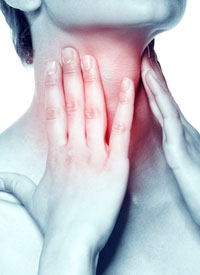Source: www.onclive.com
Author: Lauren M. Green
Doxepin rinse may prove to be a viable option for the relief of pain associated with oral mucositis (OM) in patients with head and neck cancers, according to findings of a phase III trial.
This randomized, double-blind, placebo-controlled trial, conducted under the auspices of the Alliance for Clinical Trials in Oncology cooperative group, enrolled 155 patients who were being treated at 26 cancer centers across the country between December 2010 and May 2012. To be eligible, patients were undergoing radiotherapy to a minimum planned dose of 50 Gy and experiencing OM-related pain ≥4 on a 0 to 10 scale.
Participants were randomized 1:1 to receive either doxepin (25 mg diluted to 5 mL with 2.5 mL of sterile or distilled water) on day 1, then crossing over to a placebo on a subsequent day (arm A), or placebo on the first day followed by the doxepin preparation (arm B). Patients in both arms were instructed to swish the solution in their mouth for 1 minute, gargle, and expectorate.
The study’s primary endpoint was a reduction in pain as measured by the pain scale’s area under the curve (AUC), using assessments based on the Oral Mucositis Daily and Weekly Questionnaires–Head and Neck Cancer, administered at baseline and at 5, 15, 30, 60, 120, and 240 minutes for each treatment arm. Patients were allowed to leave after the first hour, instructed to complete the questionnaires at 2- and 4-hour intervals, and received telephone reminders.
Researchers reported that the AUC for the mean reduction in mouth and throat pain was significantly greater with doxepin than placebo, -9.1 and -4.7, respectively (P <.001). Intrapatient changes of +4.1 for arm A and -2.8 for arm B were determined through crossover analyses, equivalent to a treatment difference of -3.5 (95% CI, -5.1 to -1.8; P <.001), for doxepin versus placebo.
As secondary outcomes, researchers also assessed any stinging or burning, unpleasant taste, and/or drowsiness resulting from the rinse, as well as whether additional analgesia was required 2 and 4 hours after administration.
Adverse effects of doxepin were typically mild and consistent with those identified in previous phase I/II studies. The AUC for stinging and burning was significantly higher with doxepin, being highest 5 minutes after rinsing. The sensations were reduced, but remained statistically significant over the 4-hour postrinse assessment.
Taste also was ranked using AUC on a 0 (acceptable) to 10 (terrible) scale; patients preferred the placebo (5.5) to the doxepin (7.7). After 5 minutes, however, both were deemed acceptable: doxepin (2.9), placebo (1.6).
No significant differences were reported in the use of additional analgesics following use of the rinse versus placebo. Drowsiness was associated more with doxepin, a known adverse effect of the agent; however, differences with placebo did not reach statistical significance until assessment at 2 hours (3.9 for doxepin vs 2.8 for placebo; P = .02), based on a scale of 0 (no drowsiness) to 10 (extreme drowsiness resulting in sleep). The researchers noted that some patients deemed the rinse’s sedative effect beneficial as a sleep aid.
Notably, the researchers reported that 63% of patients (n = 81) chose to continue using the doxepin rinse at the conclusion of the trial, with more patients in arm A indicating a desire to continue treatment than those in arm B. Of those who continued the treatment, 14 (17%) subsequently stopped, most often citing burning discomfort and increased drowsiness.
The authors noted that their research represents “the largest placebo-controlled trial to date specifically testing the efficacy of a rinse agent in controlling established mucositis pain and the only such trial with positive results.”


Leave A Comment
You must be logged in to post a comment.